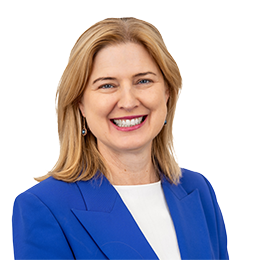
Issued by Senator the Hon Murray Watt - former Minister for Agriculture, Fisheries and Forestry
Fishing for future success
A new Futures of Seafood project led by government, industry and research partners has been launched to support industry growth, improve sustainability and identify emerging issues impacting the fisheries and aquaculture sectors.
Minister for Agriculture, Fisheries and Forestry, Murray Watt joined representatives from Seafood Industry Australia and the Blue Economy Cooperative Research Centre in Hobart to launch the project.
Minister Watt said the Australian Government would contribute $450,000 for research to identify potential future opportunities for the sectors and emerging impacts on them.
“The Albanese Government is committed to back the future growth of the fisheries and aquaculture industries, which is why we have invested nearly half a million dollars towards delivering this project,” Minister Watt said.
“This project will paint a clearer picture of the impacts of emerging marine activities and climate change pressures on fishing and aquaculture.
“By mapping and modelling current impacts facing the industry, we can help the fishing and aquaculture industries succeed, through better planning for the future."
ABARES estimates that the gross value of Australian fisheries and aquaculture production grew by 8.2% in 2022–23 to $3.63 billion, demonstrating the importance of this industry to Australia.
The Fisheries Research and Development Cooperation (FRDC), funded jointly by the Federal Government and industry, is supportive of this project, and is working with Seafood Industry Australia and Blue Economy CRC to ensure collaboration across the fishing and aquaculture stakeholders.
Managing Director of the FRDC Dr Patrick Hone said all fishing and aquaculture sectors are facing uncertainty as the aquatic environment responds to climate change and new sectors seek to access the resource.
“This project will be a major collaborative science contribution to ensuring Australia’s aquatic environments are healthy and resilient and ensure stakeholders that utilise these resources can contribute now and for future generations,” Dr Hone said.
Seafood Industry Australia CEO Veronica Papacosta said seafood is part of Australia's identity.
“Australian seafood is amongst the best in the world but is only available to consumers if we have continued access to our oceans and coastal areas.
“The critical need for this project is to understand the breaking points and challenges to be faced and identify the growth opportunities for the futures of the Australian seafood industry.
“Futures of Seafood is a series of work programs and outputs that will shape the future of the Australian seafood industry, marking a pivotal step in our journey toward a sustainable and thriving domestic seafood industry.”
Director Blue Policy and Planning at Blue Economy CRC, Angela Williamson said seafood plays an important role in Australia’s coastal communities, jobs and nutritional security.
“It has been at the heart of towns like Lakes Entrance, Eden, and regions like the Spencer Gulf and East coast of Tasmania,” Ms Williamson said.
“But climate, nature and how we use and protect oceans are all changing.
“This world leading study will profile and map our seafood footprint, provide evidence-based insights and chart a course for Australia’s futures of seafood alongside other ocean uses for the coming 10-15 years.”
